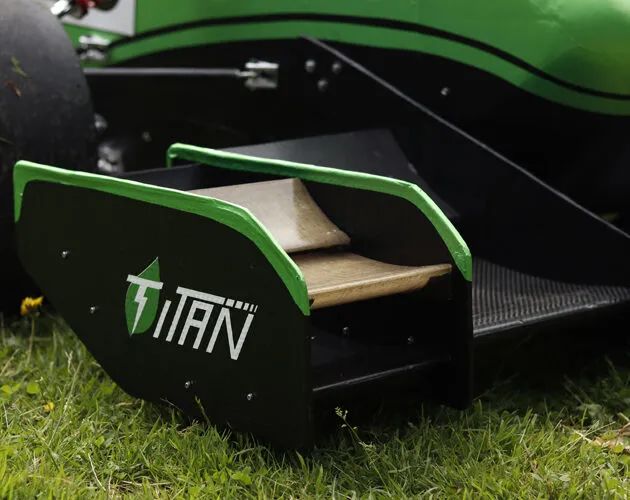The front wing of the Titan race car features rPET honeycomb that can withstand 1,000 times its own weight
May 29, 2024, 11:58 AM
TDD-global
6261
Based on recycled PET material, the rPET honeycomb core is made from 100% recycled material, primarily from non-food post-consumer and industrial PET waste streams, helping to overcome the oversupply of these most problematic PET waste streams.
Based on recycled PET material, the rPET honeycomb core is made from 100% recycled material, primarily from non-food post-consumer and industrial PET waste streams, helping to overcome the oversupply of these most problematic PET waste streams.

Due to its enormous mechanical properties, light weight and high temperature stability, rPET is the material of choice for a range of applications including automotive, transportation, building and construction, industrial packaging/graphics displays, furniture and more. One industry in particular where the mechanical properties and weight of material solutions can make the difference between winning and losing is motorsport.
EconCore's rPET honeycomb cores are currently being used in the front wings of Belgian Formula E cars. A team of engineering students created the front wing skins from natural flax fibers. Last year, the team used carbon fiber-reinforced composites for the skin of the wing profile, and to make the wing more rigid, they needed aluminum reinforcements similar to those found in aircraft wings.

Formula Electric Belgium's commitment to "green innovation meets performance" perfectly encapsulates EconCore's rPET technology. To take a more sustainable approach without compromising performance, Formula Electric Belgium replaced the aluminium stiffeners with rPET honeycombs, producing a lighter, stronger sandwich panel.
For their front wing design, Formula Electric Belgium needed a thermoplastic material as it had to be thermoformed. For the thermoforming of the rPET core, the Formula Electric Belgian team formed the wing from a constant thickness, using a heated mold to press the core into shape. Not only has the rPET honeycomb core found its place in the aerodynamic package, the entire chassis of the 220kg race car is also produced from EconCore's rPET honeycomb core.
By optimizing the use of rPET honeycomb technology, the Formula Electric Belgian team was able to reduce wing weight by 26% compared to last year's wing of the same size.

Due to its enormous mechanical properties, light weight and high temperature stability, rPET is the material of choice for a range of applications including automotive, transportation, building and construction, industrial packaging/graphics displays, furniture and more. One industry in particular where the mechanical properties and weight of material solutions can make the difference between winning and losing is motorsport.
EconCore's rPET honeycomb cores are currently being used in the front wings of Belgian Formula E cars. A team of engineering students created the front wing skins from natural flax fibers. Last year, the team used carbon fiber-reinforced composites for the skin of the wing profile, and to make the wing more rigid, they needed aluminum reinforcements similar to those found in aircraft wings.

For their front wing design, Formula Electric Belgium needed a thermoplastic material as it had to be thermoformed. For the thermoforming of the rPET core, the Formula Electric Belgian team formed the wing from a constant thickness, using a heated mold to press the core into shape. Not only has the rPET honeycomb core found its place in the aerodynamic package, the entire chassis of the 220kg race car is also produced from EconCore's rPET honeycomb core.
By optimizing the use of rPET honeycomb technology, the Formula Electric Belgian team was able to reduce wing weight by 26% compared to last year's wing of the same size.
August 21, 2024, 2:42 PM
August 21, 2024, 2:28 PM
August 21, 2024, 2:52 PM
August 21, 2024, 2:20 PM













